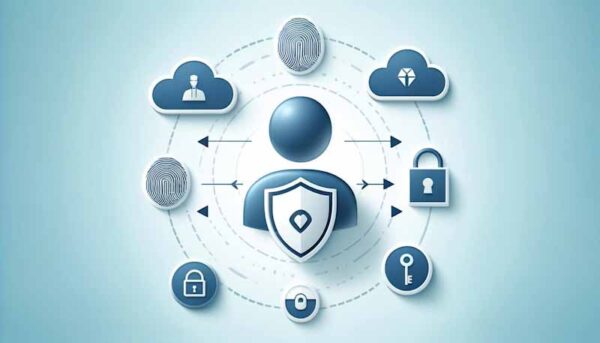Identity and Access Management (IAM) is changing rapidly. As organizations face increasing cyber threats, IAM solutions are becoming more advanced, integrating cutting-edge technologies like biometrics and artificial intelligence (AI) to enhance security and efficiency. This blog explores the future of IAM, showing key predictions and the impactful role of biometrics and AI.
The Rise of Biometrics in IAM
Biometrics will redefine IAM through fingerprint scanning, facial recognition, and iris scanning. Unlike traditional passwords, biometric data is unique to each individual, making it a more secure method for identity verification. As technology improves, biometric authentication will become more widespread, reducing dependence on passwords and improving security measures.
Enhanced Security
Biometrics offer a higher level of security as they are difficult to forge or steal. This reduces the risk of unauthorized access.
User Convenience
Biometric authentication is faster and easier than recalling and entering complex passwords.
For more on the benefits of biometrics in security, check out this IAM Article
AI’s Role in Managing Identities
Artificial Intelligence is set to play a critical role in the future of IAM. AI can analyze vast amounts of data to detect real-time anomalies and potential security threats. This proactive approach helps organizations prevent breaches before they occur.
Real-Time Monitoring
AI systems can constantly monitor user behavior and access patterns, instantly recognizing suspicious activities.
Automated Responses
AI can automatically trigger security protocols when noticing unusual behavior, making sure immediate action to reduce risks.
Discover how AI is transforming cybersecurity in this informed article on AI in IAM
IAM in Different Industries
IAM solutions are widely used across various industries. Here are a few examples:
Healthcare: IAM ensures that only authorized personnel can access sensitive patient data. Healthcare providers can enhance patient privacy and data security with AI and biometrics.
Future Impact: Advanced IAM solutions will enable smooth integration of telehealth services, making sure secure patient-doctor interactions.
Finance: Banks and financial institutions use IAM to protect customer data and manage access to financial systems. Multi-factor authentication (MFA) and biometric verification are increasingly common.
Future Impact: Blockchain technology will provide unchangeable identity verification, reducing fraud and improving trust in financial transactions.
Retail: Retailers use IAM to secure customer information and manage employee access to internal systems. This helps prevent data breaches and protects consumer privacy.
Future Impact: AI-driven IAM solutions will personalize the customer experience, using data analytics to tailor services while ensuring security.
Education: Schools and universities rely on IAM to manage access to student records and educational resources. Biometrics and AI can simplify identity verification for students and staff.
Future Impact: IAM will support the growth of e-learning platforms, providing secure and easy access to educational materials.
Predictions for Future IAM Solutions
Increased Adoption of Multi-Factor Authentication (MFA): Combining biometrics with traditional methods like passwords or tokens will become standard practice.
Blockchain Integration: Blockchain technology will enhance IAM by providing unchanging identity verification processes.
Zero Trust Architecture: The shift towards a zero-trust model, where no user is trusted, will require continuous verification and monitoring.
The future of Identity and Access Management is bright, with biometrics and AI playing pivotal roles in enhancing security and efficiency. As these technologies advance, organizations will be better equipped to protect sensitive data and manage identities effectively. Staying informed about these trends is crucial for businesses aiming to safeguard their digital assets in an ever-evolving cyber landscape.




